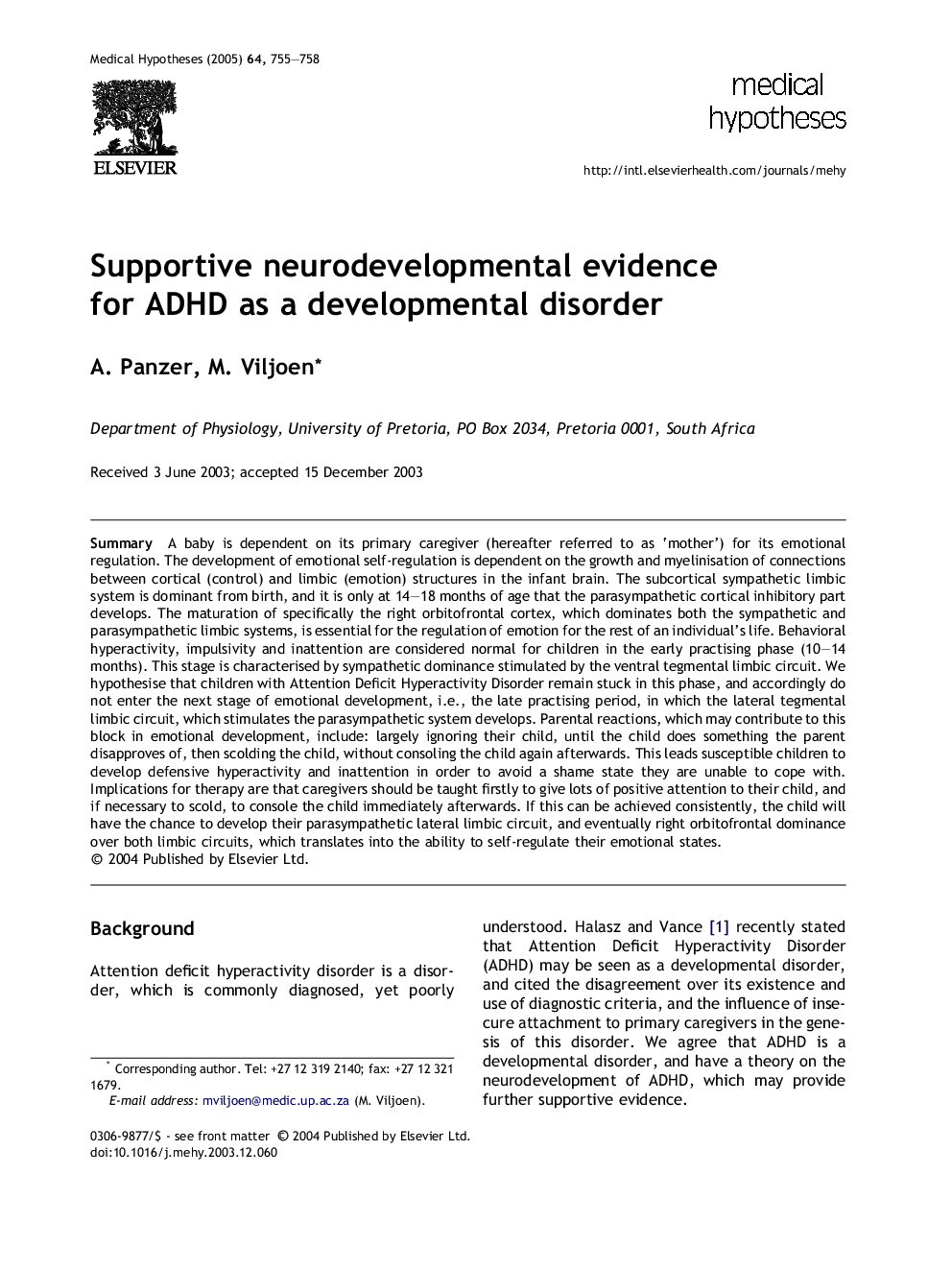| Article ID | Journal | Published Year | Pages | File Type |
|---|---|---|---|---|
| 8995795 | Medical Hypotheses | 2005 | 4 Pages |
Abstract
A baby is dependent on its primary caregiver (hereafter referred to as 'mother') for its emotional regulation. The development of emotional self-regulation is dependent on the growth and myelinisation of connections between cortical (control) and limbic (emotion) structures in the infant brain. The subcortical sympathetic limbic system is dominant from birth, and it is only at 14-18 months of age that the parasympathetic cortical inhibitory part develops. The maturation of specifically the right orbitofrontal cortex, which dominates both the sympathetic and parasympathetic limbic systems, is essential for the regulation of emotion for the rest of an individual's life. Behavioral hyperactivity, impulsivity and inattention are considered normal for children in the early practising phase (10-14 months). This stage is characterised by sympathetic dominance stimulated by the ventral tegmental limbic circuit. We hypothesise that children with Attention Deficit Hyperactivity Disorder remain stuck in this phase, and accordingly do not enter the next stage of emotional development, i.e., the late practising period, in which the lateral tegmental limbic circuit, which stimulates the parasympathetic system develops. Parental reactions, which may contribute to this block in emotional development, include: largely ignoring their child, until the child does something the parent disapproves of, then scolding the child, without consoling the child again afterwards. This leads susceptible children to develop defensive hyperactivity and inattention in order to avoid a shame state they are unable to cope with. Implications for therapy are that caregivers should be taught firstly to give lots of positive attention to their child, and if necessary to scold, to console the child immediately afterwards. If this can be achieved consistently, the child will have the chance to develop their parasympathetic lateral limbic circuit, and eventually right orbitofrontal dominance over both limbic circuits, which translates into the ability to self-regulate their emotional states.
Related Topics
Life Sciences
Biochemistry, Genetics and Molecular Biology
Developmental Biology
Authors
A. Panzer, M. Viljoen,
